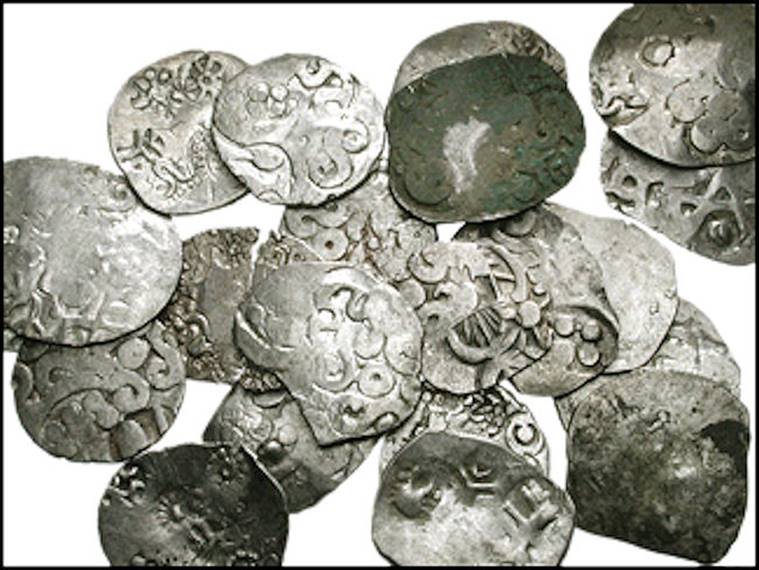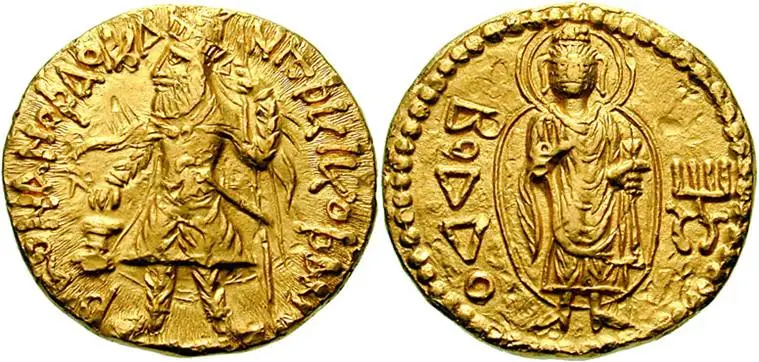Mad Money: Curious coins of ancient India
Gold coins in ancient India reached their peak with the Gupta emperors from the 3rd to 6th century AD. This was India's Golden Age, where there was prosperity all around, and people lived the good life, full of culture and joy.

This is part of the series Make History Fun Again, where the writers introduce historical facts, events and personalities in a fun way for parents to start a conversation with their kids.)
By Archana Garodia Gupta and Shruti Garodia
Coins seem commonplace today, hardly worth thinking about. But coins, since they are made from metal, endure where paper and wood and art can’t. And so coins often give us unique, intriguing insights into history. Here we tell you about some curious coins from ancient India sure to pique anyone’s interest.
1. The First Coins
These pretty, slim discs called Karshapanas were some of the earliest coins in the Indian subcontinent, dating back from around the 6th century BC. These copper and silver coins were cut from large metal sheets in irregular shapes (but standard weights), and then heavy weighted metal punches were used to stamp designs on to them. Unlike later coins, they didn’t have any inscriptions or figures of kings, but rather geometric designs or natural objects like the sun, moon, mountains, animals and so on.

2. The Indo-Greeks
As Alexander carried on his swift conquests eastward, he stationed Greek troops in all the lands from Greece up to India. He died soon after, but for many centuries, a Greek ruling class endured in large swathes of Central Asia. From around 200 BC, many Greek adventures rode off with their armies to try their hand at conquering their own little kingdoms in the fabled land of golden fortune, India.
We know about them mostly from their coins. The early coins seem like they could have come directly from Greece itself, with their diadems and helmets, Greek scripts and Greek goddesses, and Greek names like Demetrios and Appollodotos. Over time, these Indo-Greek kings became ever more Indian. They started worshipping the Buddha and Hindu gods like Vishnu and Krishna. In fact, the earliest known depiction of Lord Krishna is on the coin of a King Agathokles, who depicts him in a chiton (an ancient Greek dress worn by men), along with his chakra!

3. The Roman Caesars
You might be wondering why Roman coins make an appearance in this list. In fact, the Roman Empire had long-lasting trade ties with ancient India – finely woven cotton cloth that felt like air was a luxury fashion item for centuries, which actually cost more than Chinese silk! Roman gold and silver poured into India, and many coins have been found all over India – ranging from the time of the first Roman Emperor Augustus Caesar in the 30s BC, to Justinian I, 600 years later!
These Roman coins became a big hit in South India – not only as money, but as fashionable gold-coin necklaces and earrings! As Roman trade with southern India gradually declined and Roman gold coins slowed to a trickle, the fashion-conscious Indians began making crude imitations of these coins, just to meet the demand for jewellery!
4. Kanishka the Kushan
Roman denarii were the first gold coins to appear in India, which had only seen copper and silver coins so far, though of course, gold jewellery had been around for ages. Soon the Indian rulers of the day copied the idea and gold coins were minted in India for the first time. Who were these rulers? They were called the Kushans, an Indo-European tribe who had long roamed the Asian steppes, before gradually settling in upper Afghanistan. In the 1st century AD, the Kushans thundered into India and swiftly formed an unusual empire – unusual in that it straddled most of north India, but also parts of Central Asia and western China!

The bearded, pant-wearing Kushan king Kanishka thus ruled over a truly multicultural empire, which is beautifully depicted in his coins, which show him with deities ranging from the Buddha to Zorastrian and Greek gods!
5. The Guptas
Gold coins in ancient India reached their peak with the Gupta emperors from the 3rd to 6th century AD. This was India’s Golden Age, where there was prosperity all around, and people lived the good life, full of culture and joy.
The Gupta coins are works of art in themselves, and show the monarchs not just as warrior kings, but as men who prided themselves in their refinement. Thus you see coins with the mighty conqueror Samudragupta shown playing the veena, or standing with his queen, along with those of him with a bow or battle axe.

(For more fun journeys through India’s history, check out the recently released two-volume set, The History of India for Children Vol. 1 and Vol. 2, published by Hachette India. Follow on twitter @shrutigarodia_)
Source: Read Full Article


